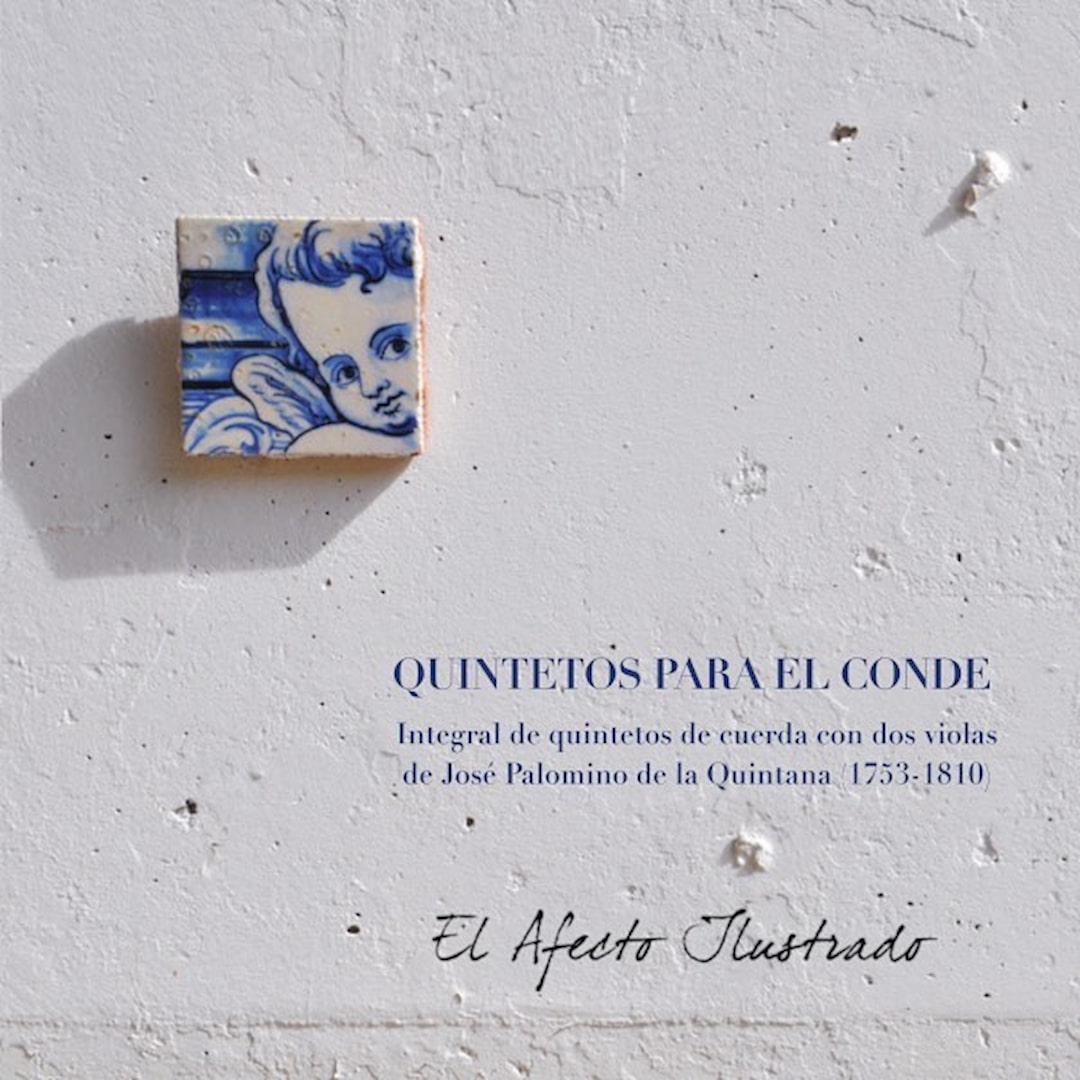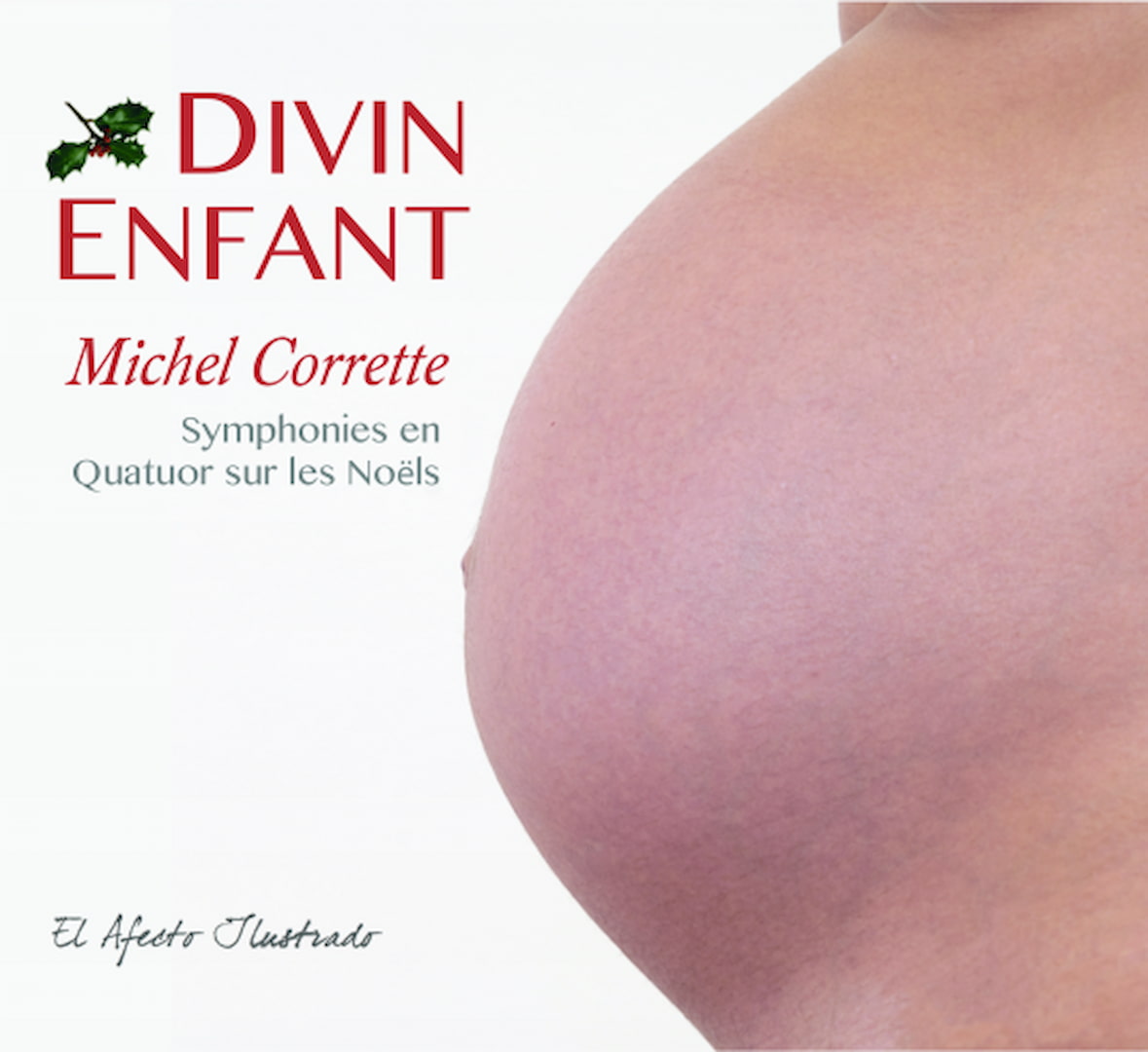discography

Quintetos para el Conde: José Palomino de la Quintana (1753-1810)
Complete String Quintets with Two Violas by José Palomino de la Quintana
El Afecto Ilustrado
Información General
JOSÉ PALOMINO DE LA QUINTANA
Like many other Iberian authors and instrumentalists from the second half of the 18th century, the figure of José Palomino de la Quintana (1753–1810) remains, to this day, largely unknown outside of specialized circles. Not only was he a composer, but also a virtuoso violinist, occasional viola player, conductor, and a forerunner of the model of the musician as a servant to royalty, while also working under commissions from the aristocracy, the Church, and theatrical productions.
The work of José Palomino—of which these quintets are clear proof of the high quality of his craft—deserves a prominent place among the musical output of the Enlightenment era in the Iberian Peninsula. His music is marked by beautiful lyricism, effective harmony, and a style that often anticipates future aesthetics. Indeed, this collection of string quintets with two violas, dedicated to Carlos José Gutiérrez de los Ríos (1742–1795), 6th Count of Fernán Núñez, is clear evidence of the high level of compositional achievement reached in the Iberian sphere during the final third of the 18th century.
José Palomino de la Quintana was born in Madrid in 1753. His father, Mariano Palomino, also a professional violinist, was originally from Zaragoza, while his mother, Antonia de la Quintana, came from Madrid. In addition to his brothers Pedro and Antonio also being violinists, his grandparents were closely linked to the world of theater. After first studying with his father and later with Antonio Rodríguez de Hita, chapel master of the Royal Monastery of the Incarnation in Madrid, he became a prominent performer, even competing for the last violin position in the Royal Chapel of Madrid in 1770. At that time, the Spanish capital was striving to match the great European cities, thanks to the improvements and reforms introduced by King Charles III. In the last third of the century, the ideal conditions arose for a climate of musical effervescence at court, attracting performers from all over the country and even from abroad. The Arts, in general, were flourishing, partly due to the Enlightenment spirit blowing through Spain.
In 1773, José Palomino requested a six-month leave to go to Portugal, specifically to the city of Lisbon, claiming that his father was ill there and that a younger brother was in his care. However, the real reason for his resignation from the Royal Chapel position remains unclear. In any case, when his leave expired, the Spanish Royal Chapel reopened the position for competition in 1774.
Nevertheless, from that very year, he was appointed violinist of the Royal Chamber of Lisbon, a post he would hold until 1807. Portuguese musicologist Cristina Fernandes pointed to better economic conditions and the favorable treatment within the ensemble as possible reasons for his move—an ensemble that, at the time, was one of the finest in all of Europe. Lisbon had risen from the ashes of the devastating 1755 earthquake, and music was one of the defining elements of the new and resplendent capital, with strong support from the Crown. In Portugal, Palomino gained fame not only as a performer but also as a composer. While still very young and a student of Rodríguez de Hita, he composed the theatrical tonadilla El Canapé, which was a success in Madrid in 1767.
His activity in the Portuguese capital soon earned him a distinguished social and musical standing, even making him a model of the Enlightened man. His significant role in the musical and cultural life of the Portuguese Court brought him into contact with the 6th Count of Fernán Núñez, Spain’s ambassador to Portugal from 1778 to 1786. As a result of his relationship with the Spanish nobleman, Palomino composed these Quintets, as well as other notable works such as the serenade Il ritorno di Astrea in Terra, written for the double wedding in 1785 that joined the Spanish Infante Don Gabriel with the Portuguese Infanta Mariana Victoria, and Doña Carlota Joaquina with Dom João, Prince of Brazil.
By the early 19th century, José Palomino had become a well-established figure in the musical and cultural circles of the Court. His duties included not only performing as a violinist but also composing music commissioned by the Royal Household, directing and organizing repertoires and ceremonies, and managing requests for musical copies.
In 1802, after 28 years of service to the Portuguese Crown, he applied for Portuguese nationality. That same year, his brother Pedro Palomino, who had worked alongside their father Mariano Palomino since 1790 in the Chapel of the Cathedral of Las Palmas de Gran Canaria, returned to Lisbon. Pedro had already brought José’s music to the Canary Islands and undoubtedly played a role in securing his appointment as chapel master of the Cathedral of Santa Ana in Las Palmas.
Thus, when France invaded Portugal in 1807 and the Portuguese royal family went into exile in Brazil, José Palomino set out for Gran Canaria, passing through Cádiz and arriving on the island in 1808, accompanied by brothers Joaquín and Manuel Núñez, violinist and cellist respectively, the latter also being Palomino’s son-in-law. Once installed as the new chapel master of the Cathedral of Las Palmas, he began a series of reforms to maximize the performance of the music chapel in what was then known as the Cathedral of the Canary Islands.
The weakened ensemble of the island’s temple was restructured and thoroughly optimized, modernized in both style and configuration. Palomino faced the economic crisis that had begun in the archipelago at the end of the 18th century, and despite these challenges, he composed a significant body of religious works, exemplifying the quality that had defined his Portuguese period.
In 1810, Palomino died in Gran Canaria, where his music continued to be celebrated for a long time. He was succeeded by Joaquín Núñez, the violinist and brother of his son-in-law, who had accompanied him from the Iberian Peninsula to the Canary Islands.

DIVIN ENFANT: Michel Corrette (1707-1795)
Symphonies en Quatuor sur les Noëls.
El Afecto Ilustrado
Información General
Michel Corrette
Adrián Linares, violín I – Lorena Padrón, violín II – Iván Sáez, viola – Diego Pérez, violoncello – Carlos Oramas, tiorba y guitarra barroca
Michel Corrette, a French organist and composer, was born in Rouen in 1707 and died in Paris in 1795. In 1720, he left his hometown to pursue a musical education that had most likely begun under his father, Gaspard Corrette. By 1726, at the age of twenty, he competed for the position of organist at the Church of La Madeleine in Paris. However, he was not awarded the post and made a living in early 18th-century Paris as a music teacher. In 1727, he published his first collections of sonatas, primarily for violin, flute, and hurdy-gurdy—an instrument quite fashionable at the time. In 1728, he became one of the first French musicians to publish concertos for solo instruments following the model established by the Venetian composer Antonio Vivaldi.
Starting in 1733, Corrette alternated as concertmaster in several orchestras in the city, and likely due to his involvement with circles linked to the so-called Opéra Comique, he began creating his celebrated Concerts Comiques, based on popular tunes and typically intended as entertainment between theatrical acts. This collection of 25 pieces would be completed around 1773.
Appointed as organist of Sainte-Marie du Temple, in 1737 he published his first book of organ music, followed by a second in 1750 and a third in 1756. Thus, he entered into the service of the Parisian temple and received commissions from the French royal family. He worked for the Chevalier d’Orléans, the Prince of Conti, and the Duke of Angoulême.
In his first Livre des Noëls from 1741, he presents himself as the organist of the Jesuit House, at the Church of Saint-Louis, where music played a highly esteemed role in religious services. Corrette would retain his post within the Jesuit Order until 1762, the year the Society of Jesus was expelled from France. Nevertheless, and despite the French Revolution of 1789, Corrette maintained his position as organist at Sainte-Marie du Temple until 1791. Interestingly, Michel Corrette published the last organ book in Paris under the Ancien Régime, his Pièces pour l’orgue dans un genre nouveau, in 1787.
Michel Corrette was a highly prolific composer, and given the time in which he lived and worked, his output offers a faithful reflection of the evolving aesthetic and musical tastes of 18th-century France. While his early harpsichord works (1734) align with the Couperin school, later compositions such as Les Amusements du Parnasse (composed between 1749 and 1772) and the Divertissements pour clavecin ou pianoforte (1779) display stronger traits of the Galant style, and at times, clear Classical structures. Nonetheless, Corrette was also a staunch advocate of the Italian style—a fact clearly evident in the aesthetics of the Symphonies de Noël we hear tonight. Despite being a catalog of French Christmas carols of the time, these works are composed in a distinctly Italian style.
Although Michel Corrette’s oeuvre is vast, it would be unfair not to mention his role as a pedagogue. A prolific author of method books for various instruments, he embraced Enlightenment ideals in his efforts to codify and disseminate musical knowledge to the educated masses. His instructional books enjoyed great popularity and were commonly found in major libraries.
Michel Corrette is, ultimately, one of those great figures whom history has unjustly forgotten—not only for his compositional output but also for his significant pedagogical contributions and his interest in popular tunes, which he skillfully integrated into his music, creating a unique fusion with both French and Italian nuances.
